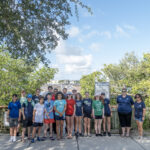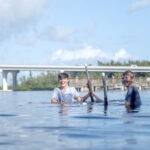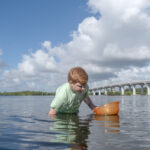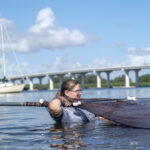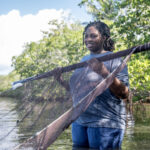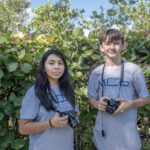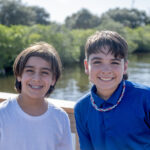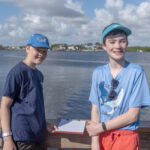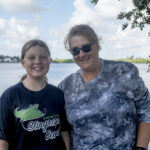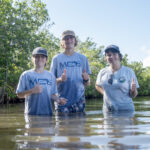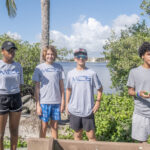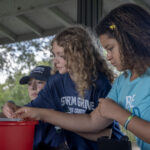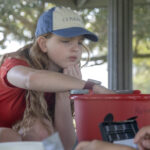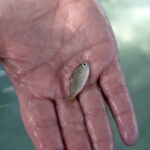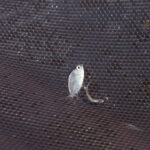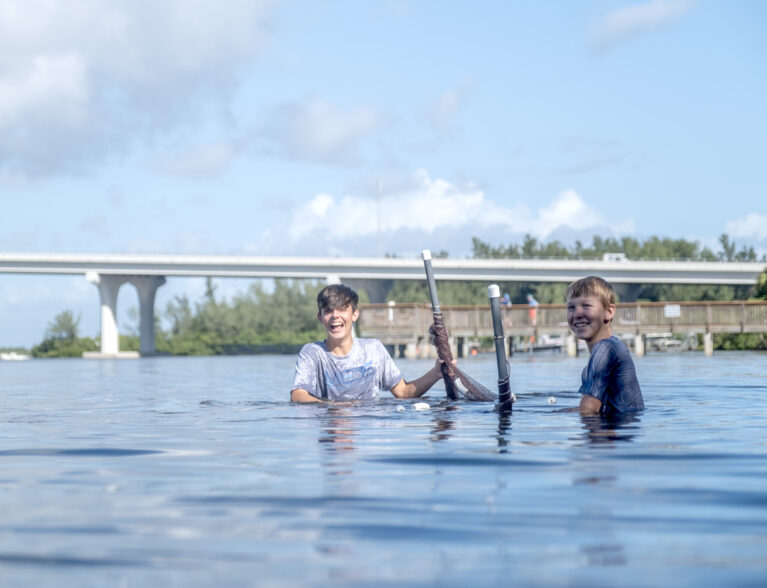
Indian River County students were among the hundreds of elementary, middle and high school children and their teachers from 34 schools across six counties who got their hands, and occasionally feet, wet as participants in the sixth annual ‘A Day in the Life of the Indian River Lagoon,’ a citizen science project of the Ocean Research and Conservation Association.
ORCA staff were assisted during the morning event by professionals from 30 other environmental organizations, including, from Indian River County, the Environmental Learning Center, the IRC Stormwater Division and Pelican Island Audubon.
The local schools that participated were Beachland Elementary, Gifford Middle School, Sebastian Charter Junior High, Sebastian River High School, St. Edward’s Upper School, Storm Grove Middle School, Vero Beach Elementary and Vero Beach High School.
Students spent the morning assessing the chemical, physical and biological parameters of the lagoon, conducting a comprehensive study of the water’s temperature, salinity, dissolved oxygen, pH, nitrates and phosphates, and the biological inventory of the organisms that live at the various sites. The data will be used for research into its water quality and biological inventories and, as the program progresses, will enable researchers to document whether conditions have improved or deteriorated. And, more importantly, why.
As a working field trip, students connect first-hand with the lagoon and will, hopefully, recognize how important its preservation is to the birds, marine life and plants that call it home. ORCA provides the schools with a free five-lesson curriculum that emphasizes the collected data, and will also have its staff visit the classrooms to encourage interest in environmental conservation and other STEM (Science, Technology, Engineering and Math) professions.
A Day in the Life is one of ORCA’s four citizen science projects, each concentrated on preserving and protecting the 156-mile lagoon through science, restoration, advocacy and education.
Other citizen science projects include One Health Fish Monitoring, which assesses the transfer of toxins from the lagoon and surrounding waterways into marine life; Land to Sea, which constructs and monitors ORCA’s living shoreline projects; and Pollution Mapping, which monitors and analyzes water and sediment samples to identify the various sources of pollution.
There are additional ways for students to get involved in helping improve the health of the lagoon, such as the Team ORCA Data Jam, where they are challenged to devise creative and artistic ways to exhibit the collected datasets. Additionally, the Kilroy Academy, an Internet-based education program for high school students, provides data from the live Kilroy network (ORCA’s continuous water monitoring system) to help them understand the challenges to our local ecosystem.
ORCA, a nonprofit organization and the “nation’s first technology-based marine conservation association,” is focused on protecting and restoring our aquatic ecosystems and the species they sustain.
On Feb. 24, join ORCA at Triton Submarines for an Explorer’s Experience fundraiser. For more information, visit teamorca.org.
Photos by Joshua Kodis
- Nathan Hurst, and Carter Duncklee.
- Jacob Brunner
- Hannah Royals
- Roylisa Ragin
- Joselyn Barba, and Carter Savage
- Andrew Murray and Trent Brown.
- Alyssa Walter, and Danila Maryinez.
- Dallen McGough and Christian Harris.
- Elenor Russell and Kim Bryant.
- Andrew Nance, Jude Raymen, and Luarn Reeves.
- Verrama Derice, Liam Arsenault, Tyler Brinson, and Carson Vuich.
- Miles Livingston, Terrence Porter, Joseph Monti, and Ryan Grantrer.
- Violet Love Odell, Autumn Morris, and Sophia Galbraith.
- Isabelle Brunner

